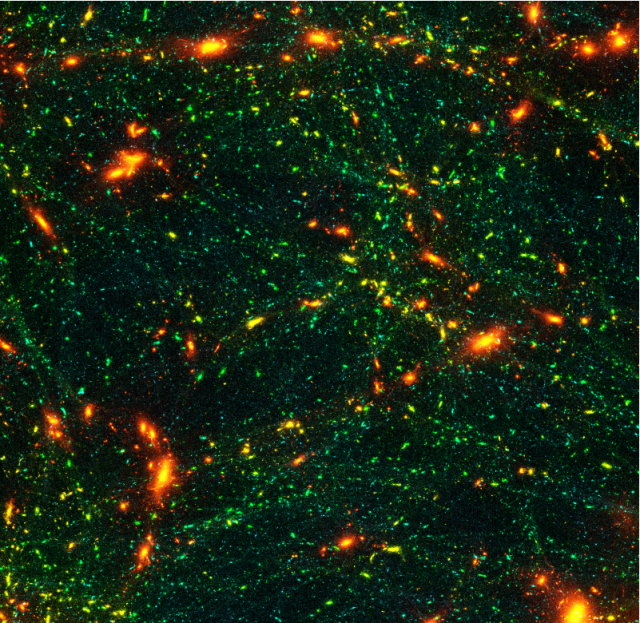We all know how massively parallel programming is assuming ever greater importance in astronomy. This week, I describe the Visual Interface for the Virtual Observatory (VisIVO) package and describe how it was used to visualize the results of a cosmological N-body simulation. I learned about the cosmology study from the International Science Grid This Week website.
The image below, showing 70 million elements from an N-body simulation, was created using the Visual Interface for the Virtual Observatory (VisIVO), a suite of open-source software tools for generating customized, multi-dimensional images from large-scale astrophysical data. It can process massive data sets from multiple sources and combine them into accurate 3D visualizations. The computing power comes from the Cometa Consortium grid, distributed across seven sites in Sicily, Italy, and provides access to 250 CPUs and two terabytes of storage. See this case study for full details.

Seventy million elements of a cosmological N-body simulation visualized with Splotch through VisIVO. Careful inspection reveals elliptical galaxies, dwarf ellipticals, merging galaxies, and also filaments and voids. Image courtesy Becciani, U. et al.
You can learn more about VisIVO in this presentation
